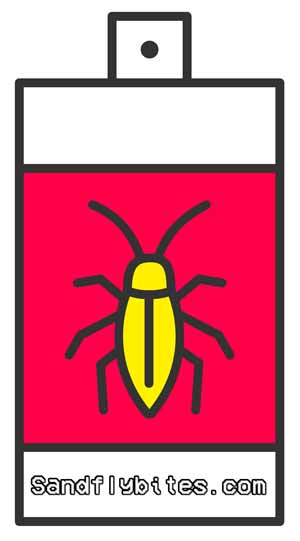
23 Aug Sandflies in Singapore
Sandflies in Singapore: You will find sandflies on nearly all wonderful beaches of Singapore
Sandflies in Singapore
Singapore’s most popular destinations are plagued by sandflies. The sandfly species present in Singapore are a public health nuisance, however, they are not a public health risk, as the species that bite do not carry any infectious or transmittable diseases.
In Singapore you will find different sandfly species found and only 3 of these bite humans: 3 species are very similar in size, approximately 2–3mm in lengthand appear identical to the naked eye.
Sandflies breed in running water and are particularly prolific in areas near water and humid bush, for example at all the amazing beaches, lakes and rivers.
They are daybiters, striking primarily at dawn and dusk. Sandflies thrive on warm and cloudy days in the summer. Good
At this beaches/ Places in Singapore, you will find Sandfly
- St John’s Island: Previously known as Pulau Sakijang Bendera, is one of the Southern Islands in Singapore. It is located approximately 6.5 km to the south of Singapore.
- Sentosa Island: Known mononymously as Sentosa, is an island located off the southern coast of Singapore’s main island. The island is separated from the main island of Singapore by a channel of water, the Keppel Harbour, and is adjacent to Pulau Brani, a smaller island wedged between Sentosa and the main island.
- Trikora beach: Located east of Bintan Island in the Riau Archipelago, is a long stretch of white beach, scattered with picturesque huge boulders
- Toa Payoh park: Is located at the junction of Lorong 2 Toa Payoh and Lorong 6 Toa Payoh.
- Botanical Gardens: Founded in 1859, the Singapore Botanic Gardens showcases the best and most spectacular of tropical flora set in a stunning verdant landscape
- Changi Beach: Is a beach park located at the northern tip of Changi in the eastern region of Singapore.
- Punggol Waterway: Is a 122,500 m2riverine park located in Punggol, Singapore, along Sentul Crescent. The park consists of four themed areas. Each area is designated to cater to different users of the park.
- Cony Island: Alternatively known as Pulau Serangoon, is a 133-hectare island located off the northeastern coast of Singapore within the town of Punggol, between Pulau Ubin to its northeast and the mainland to its southwest
Sandfly bites Symptoms in Singapore:
 What are the first steps to take after I got a new sandfly bite in Singapore? (FAQ)
What are the first steps to take after I got a new sandfly bite in Singapore? (FAQ)
The first thing you should do after a new sandfly bite is apply heat to the sandfly bite. This will destroy the proteins of the histamine in the salvia of the sandflies, which initially causes the itching. Our top tip to do so is the “bite away“ bite pen, which heats up to 51°C, and is very safe to use. You can also use a towel and very hot water
But take care not to hurt yourself!!!
Can I do anything to prevent sandflies from biting in Singapore?
No, there is nothing you can do or apply on your skin that will 100% prevent sandflys to bite you. You can apply coconut oil on your skin to make it harder for the sandfly to land on you. Sandflies have also difficulties to bite through the lubricating oil film of the coconut oil.
Use Deet!
Is there anything that will completely stop the itching of sandfly bites in Singapore?
There are several really good sprays and lotions to put on the bite afterwards
As the itching is caused by the histamine in the salvia of the sandfly you can get anti-histamine-tablets in the pharmacy, which will help you a lot (also they will make you a bit tired)
How long do they last in Singapore?
Every sandfly bite heals differently depending on your sensitivity and on the spot you have been hit. The less you touch (or scratch) the sandfly bite, the quicker it will be healed off. In general, it can be said that it takes around 3 days until 1,5 weeks. But check out our amazing tips, which will help you get over the sandfly bite
Are sandfly bites dangerous?
In most of the cases, sandfly bites are a real pain in the neck but in some cases, there might be possibilities to carry diseases. Plz take a look to WHO
We have put together hygiene tips to be prepared for bites (and other situations) even on the beach here…





No Comments